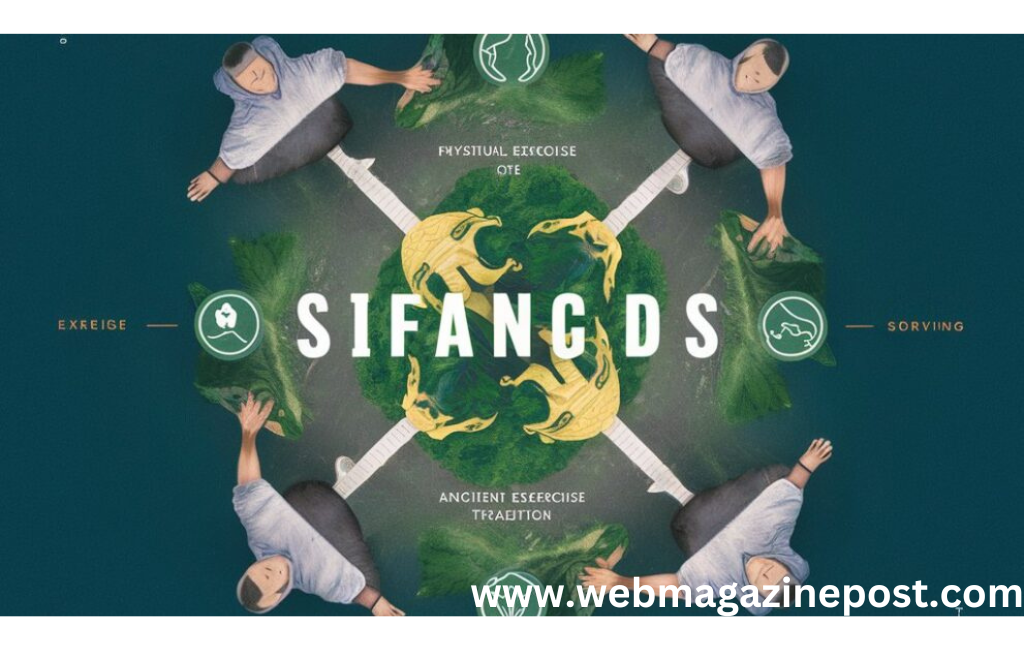
The Fascinating World of Sifangds:100% A Comprehensive Guide
Introduction to Sifangds
What comes to mind when you hear “Sifangds”? Is it an architectural marvel or a cultural relic? In this comprehensive guide, we will explore the multifaceted world of Sifangds, shedding light on their origins, significance, and impact in today’s world. Buckle up for an intriguing journey through history, culture, and modernity as we uncover everything there is to know about Sifangd.s.
Historical Background
Origins of Sifangds
Sifangds have roots deeply entrenched in ancient history. Originating from the East, these structures were initially built as simple dwellings but evolved into sophisticated architectural wonders over time. Their name, derived from ancient dialects, signifies a unique design that has stood the test of time.
Evolution Over Time
From rudimentary beginnings, Sifangd.s have undergone significant transformations. Initially, they were simple square or rectangular buildings, but with time, they have incorporated complex designs and advanced construction techniques, making them an integral part of architectural history.
Types of Sifangds

Traditional Sifangds
Traditional Sifangd,s are characterized by their unique square shape and distinctive roofing styles. These buildings were primarily constructed using locally available materials, emphasizing sustainability and harmony with nature.
Modern Variants
In the contemporary world, Sifangd,s have seen numerous adaptations. Modern variants often incorporate advanced materials and technologies, blending traditional aesthetics with modern functionality. These structures can be found in various forms, from residential homes to commercial buildings.
Cultural Significance
Sifangds in Eastern Cultures
In Eastern cultures, Sifangd,s hold a special place. They are frequently regarded as symbols of harmony, balance, and tradition. Many cultural festivals and rituals are associated with these structures, highlighting their importance in the social fabric.
Global Influence and Adaptation
While Sifangd,s originated in the East, their influence has spread globally. Architects and designers worldwide have adapted Sifangds’ principles to create innovative and culturally significant structures in diverse settings.
Architectural Aspects

Design Principles
Sifangd,s are designed with meticulous attention to detail. Their layout typically emphasizes symmetry, balance, and functionality, making them not only aesthetically pleasing but also highly practical.
Key Features of Sifangds
Key features of Sifangd,s include their distinctive square layout, traditional roofing styles, and the use of natural materials. These elements combine to create structures that are both beautiful and durable.
Sifangds in Contemporary Architecture
Modern Uses
In modern architecture, Sifangds are used in a variety of ways. From residential buildings to commercial complexes, these structures have found a place in contemporary design, showcasing their versatility and timeless appeal.
Integration with Technology
Today, Sifangd,s often integrate advanced technologies to enhance their functionality and sustainability. Smart home systems, energy-efficient materials, and innovative construction techniques are just a few examples of how modern Sifangd,s are pushing the boundaries of traditional design.
Economic Impact
Sifangds in Real Estate
Sifangds have a significant impact on the real estate market. Their unique design and cultural significance often make them highly sought after, driving demand and influencing property values.
Market Trends and Analysis
Recent trends indicate a growing interest in Sifangds, both as residential properties and commercial investments. This section will delve into the latest market analysis, highlighting key trends and future prospects.
Environmental Considerations

Sustainability Practices
Sustainability is a core principle of Sifangd,s. Traditional construction methods often employed eco-friendly practices, which are still relevant today. Modern Sifangd,s continue this legacy, incorporating sustainable materials and practices to minimize environmental impact.
Eco-friendly Innovations
Innovations in sustainable architecture have further enhanced the eco-friendliness of Sifangd,s. From green roofs to solar panels, these structures are at the forefront of the movement towards greener, more sustainable living spaces.
Case Studies
Famous Sifangds Around the World
Several famous Sifangd,s around the world exemplify the best of this architectural style. This section will explore notable examples, highlighting their unique features and historical significance.
Lessons Learned from Notable Examples
By examining famous Sifangds, we can glean valuable lessons in design, construction, and sustainability. These case studies provide insights that can inform future projects and innovations in architecture.
Challenges and Opportunities

Preservation Issues
Preserving traditional Sifangd,s poses several challenges. Factors such as urbanization, environmental degradation, and neglect can threaten these structures. However, with the right strategies, it is possible to safeguard their legacy for future generations.
Future Prospects
The future of Sifangd,s looks promising, with numerous opportunities for innovation and adaptation. This section will explore potential future developments, considering how Sifangd,s can continue to evolve and thrive in a changing world.
Construction Techniques
Traditional Methods
Traditional construction techniques for Sifangd,s were often labor-intensive and relied on local craftsmanship. These methods, passed down through generations, emphasized durability and harmony with the environment.
Modern Construction Techniques
Today, modern construction techniques have revolutionized the way Sifangd,s are built. Advances in technology and materials have made it possible to create more resilient and efficient structures while maintaining the essence of traditional design.
Materials Used in Sifangds
Traditional Materials
Traditional Sifangd,s were constructed using materials such as wood, stone, and clay. These materials were chosen for their availability, durability, and ability to blend seamlessly with the natural surroundings.
Modern Alternatives
Modern Sifangd,s often incorporate alternative materials like steel, glass, and concrete. These materials offer enhanced durability and versatility, allowing for more innovative and diverse architectural designs.
Sifangds and Community
Social Impact
Sifangds have a profound social impact, often serving as community centers, cultural landmarks, and symbols of local identity. Their design fosters social interaction and community cohesion, making them integral to the social fabric.
Community Development
Beyond their architectural significance, Sifangd,s play a crucial role in community development. They can inspire civic pride, drive economic growth, and enhance the overall quality of life for residents.
Tourism and Sifangds
Tourism has a profound impact on the popularity and preservation of Sifangd,s. These architectural marvels, with their rich history and unique design, draw tourists from around the globe, bringing both economic benefits and cultural recognition to the regions where they are found. Let’s explore the relationship between tourism and Sifangds in detail.
Tourist Attractions
Sifangds are more than just buildings; they are symbols of cultural heritage and architectural ingenuity. As such, they have become significant tourist attractions. Their unique square or rectangular layouts, intricate designs, and historical significance make them appealing to tourists who are interested in architecture, history, and culture. Guided tours, exhibitions, and cultural events held at or around Sifangd,s further enhance their attractiveness to visitors.
Economic Benefits of Sifangds Tourism
Tourism centered around Sifangd,s provides numerous economic benefits to local communities. The influx of visitors boosts demand for various services, including accommodation, dining, transportation, and entertainment. This increase in demand translates to higher revenue for local businesses and job creation in sectors such as hospitality, retail, and tourism services.
Increased Visitor Numbers: The allure of Sifangd,s attracts tourists, leading to a steady flow of visitors year-round. This consistent tourism traffic supports local economies and sustains businesses.
Job Creation: Tourism creates employment opportunities in various sectors, from tour guides and hotel staff to artisans and vendors selling local crafts and products.
Revenue Generation: Tourists spend money on entrance fees, guided tours, souvenirs, and local cuisine, generating significant revenue for the community. This revenue can be reinvested into local infrastructure and services.
Boost to Local Businesses: Local shops, restaurants, and hotels benefit from the increased foot traffic, leading to economic growth and prosperity for small and medium-sized enterprises.
Cultural Preservation
Tourism plays a crucial role in the preservation of Sifangd,s. The revenue generated from tourism can be used to maintain and restore these historical structures, ensuring they remain intact for future generations. Additionally, increased awareness and appreciation of Sifangd,s can lead to greater efforts to protect and preserve these cultural treasures.
Maintenance and Restoration: Funds from tourism can be allocated to the upkeep and restoration of Sifangds, preventing decay and preserving their historical integrity.
Cultural Awareness: Tourists’ interest in Sifangds raises awareness about their historical and cultural significance, promoting a sense of pride and responsibility among local communities to preserve their heritage.
Community Development
The benefits of Sifangd,s tourism extend to community development. The influx of tourists and the associated economic growth can lead to improvements in local infrastructure, such as roads, public transportation, and public facilities. Enhanced infrastructure not only benefits tourists but also improves the quality of life for local residents.
Infrastructure Investment: Tourism revenue can be used to improve infrastructure, making the area more accessible and enjoyable for both tourists and residents.
Enhanced Public Services: Increased economic activity can lead to better public services, such as healthcare, education, and sanitation, contributing to overall community development.
Challenges and Opportunities
While tourism brings numerous benefits, it also presents challenges that need to be managed carefully. Over-tourism can lead to environmental degradation, strain on local resources, and cultural erosion. However, with sustainable tourism practices, these challenges can be mitigated.
Sustainable Tourism: Implementing sustainable tourism practices ensures that the environmental and cultural impact of tourism is minimized. This includes managing visitor numbers, promoting eco-friendly practices, and involving local communities in tourism planning and development.
Community Involvement: Engaging local communities in tourism activities and decision-making processes ensures that the benefits of tourism are distributed equitably and that cultural traditions are respected and preserved..
Economic Benefits of Sifangds Tourism
Tourism centered around Sifangd,s can bring substantial economic benefits to local communities. These unique architectural structures, with their rich history and cultural significance, attract visitors from around the world. Let’s delve into the various ways Sifangd,s tourism boosts local economies:
Increased Visitor Numbers
Sifangds, being historical and cultural landmarks, naturally draw tourists interested in architecture, history, and culture. Increased visitor numbers lead to higher demand for local services such as hotels, restaurants, and transportation, directly benefiting local businesses.
Job Creation
The influx of tourists necessitates a range of services, from guided tours to hospitality. This demand creates numerous job opportunities for locals, including roles in tourism management, customer service, and the hospitality industry. As a result, Sifangds tourism can significantly reduce local unemployment rates.
Revenue Generation
Tourist spending in the area around Sifangd,s generates substantial revenue. Visitors often spend money on entrance fees, souvenirs, local cuisine, and other services, contributing to the local economy. This revenue supports not only private businesses but also public infrastructure through taxes and tourism-related fees.
Boost to Local Businesses
Local artisans and craftsmen often benefit from Sifangd,s tourism. Visitors looking for unique souvenirs and locally made products provide a steady market for these goods. This boost helps preserve traditional crafts and promotes local entrepreneurship.
Investment in Infrastructure
To accommodate tourists, local governments and businesses invest in infrastructure improvements, such as better roads, public transportation, and facilities like restrooms and information centers. These enhancements improve the quality of life for residents and make the area more attractive to future tourists.
Cultural Preservation
Revenue from tourism can be reinvested in preserving and maintaining Sifangds and other historical sites. This ensures that these cultural treasures are protected for future generations, maintaining their appeal as tourist destinations.
Community Development
The economic benefits of Sifangds tourism extend to community development. Increased revenue allows for improved public services, such as education and healthcare, enhancing the overall well-being of the local population. Additionally, the pride and recognition gained from being home to significant cultural sites can foster a strong sense of community identity and cohesion.
Conclusion
In conclusion, Sifangds represent a fascinating blend of history, culture, and modernity. From their humble beginnings to their contemporary adaptations, these structures continue to captivate and inspire. As we look to the future, Sifangds will undoubtedly remain a vital part of our architectural and cultural heritage.
FAQs
What is a Sifangd?
A Sifangd is a traditional architectural structure originating from the East, known for its distinctive square layout
and cultural significance.
How have Sifangds evolved over time ?
Sifangds have evolved from simple dwellings to sophisticated structures incorporating advanced materials and technologies.
What materials are commonly used in Sifangd construction?
Traditional materials include wood, stone, and clay, while modern Sifangds often use steel, glass, and concrete.
Why are Sifangds important in contemporary architecture?
Sifangds blend traditional aesthetics with modern functionality, making them relevant and appealing in today’s architectural landscape.
What are the economic benefits of Sifangds tourism?
Sifangds tourism can boost local economies by attracting visitors, creating jobs, and generating revenue for local businesses.


